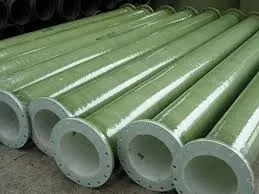
-
 Afrikaans
Afrikaans -
 Albanian
Albanian -
 Amharic
Amharic -
 Arabic
Arabic -
 Armenian
Armenian -
 Azerbaijani
Azerbaijani -
 Basque
Basque -
 Belarusian
Belarusian -
 Bengali
Bengali -
 Bosnian
Bosnian -
 Bulgarian
Bulgarian -
 Catalan
Catalan -
 Cebuano
Cebuano -
 China
China -
 China (Taiwan)
China (Taiwan) -
 Corsican
Corsican -
 Croatian
Croatian -
 Czech
Czech -
 Danish
Danish -
 Dutch
Dutch -
 English
English -
 Esperanto
Esperanto -
 Estonian
Estonian -
 Finnish
Finnish -
 French
French -
 Frisian
Frisian -
 Galician
Galician -
 Georgian
Georgian -
 German
German -
 Greek
Greek -
 Gujarati
Gujarati -
 Haitian Creole
Haitian Creole -
 hausa
hausa -
 hawaiian
hawaiian -
 Hebrew
Hebrew -
 Hindi
Hindi -
 Miao
Miao -
 Hungarian
Hungarian -
 Icelandic
Icelandic -
 igbo
igbo -
 Indonesian
Indonesian -
 irish
irish -
 Italian
Italian -
 Japanese
Japanese -
 Javanese
Javanese -
 Kannada
Kannada -
 kazakh
kazakh -
 Khmer
Khmer -
 Rwandese
Rwandese -
 Korean
Korean -
 Kurdish
Kurdish -
 Kyrgyz
Kyrgyz -
 Lao
Lao -
 Latin
Latin -
 Latvian
Latvian -
 Lithuanian
Lithuanian -
 Luxembourgish
Luxembourgish -
 Macedonian
Macedonian -
 Malgashi
Malgashi -
 Malay
Malay -
 Malayalam
Malayalam -
 Maltese
Maltese -
 Maori
Maori -
 Marathi
Marathi -
 Mongolian
Mongolian -
 Myanmar
Myanmar -
 Nepali
Nepali -
 Norwegian
Norwegian -
 Norwegian
Norwegian -
 Occitan
Occitan -
 Pashto
Pashto -
 Persian
Persian -
 Polish
Polish -
 Portuguese
Portuguese -
 Punjabi
Punjabi -
 Romanian
Romanian -
 Russian
Russian -
 Samoan
Samoan -
 Scottish Gaelic
Scottish Gaelic -
 Serbian
Serbian -
 Sesotho
Sesotho -
 Shona
Shona -
 Sindhi
Sindhi -
 Sinhala
Sinhala -
 Slovak
Slovak -
 Slovenian
Slovenian -
 Somali
Somali -
 Spanish
Spanish -
 Sundanese
Sundanese -
 Swahili
Swahili -
 Swedish
Swedish -
 Tagalog
Tagalog -
 Tajik
Tajik -
 Tamil
Tamil -
 Tatar
Tatar -
 Telugu
Telugu -
 Thai
Thai -
 Turkish
Turkish -
 Turkmen
Turkmen -
 Ukrainian
Ukrainian -
 Urdu
Urdu -
 Uighur
Uighur -
 Uzbek
Uzbek -
 Vietnamese
Vietnamese -
 Welsh
Welsh -
 Bantu
Bantu -
 Yiddish
Yiddish -
 Yoruba
Yoruba -
 Zulu
Zulu
t38 drill rod a comprehensive guide to selecting and using the
A Comprehensive Guide to Selecting and Using T38 Drill Rods
Drilling operations are fundamental in various industries, particularly in mining, construction, and geological exploration. One essential component of these operations is the drill rod, which serves as the backbone of the drilling system. Among the various options available in the market, T38 drill rods have gained popularity due to their versatility, strength, and reliability. This article aims to provide a comprehensive guide for selecting and using T38 drill rods effectively.
Understanding T38 Drill Rods
T38 drill rods are specifically designed for use in various drilling applications, including core drilling and exploration projects. The T in T38 denotes the thread type, which is designed to provide a strong and secure connection between rods. The number 38 refers to the outer diameter of the rod, approximately 38 millimeters. This size strikes a balance between strength and weight, making T38 drill rods suitable for a wide range of drilling environments.
Selecting T38 Drill Rods
When choosing T38 drill rods, several factors should be considered to ensure optimal performance
1. Material Quality The quality of the material used in manufacturing T38 drill rods significantly affects their performance and longevity. Look for rods made from high-strength steel that can withstand the harsh conditions of drilling. Additionally, ensure that the rods meet international quality standards.
2. Length of the Rod Drill rods come in various lengths, and selecting the right length can enhance efficiency during drilling operations. Longer rods can reduce the frequency of connection and disconnection, which saves time and effort. Conversely, shorter rods can be beneficial in confined spaces or where maneuverability is a priority.
3. Thread Type T38 rods typically come with a specific thread type that matches compatible drilling equipment. It is crucial to ensure that the threads are in good condition and compatible with your drilling rig to prevent any operational issues.
t38 drill rod a comprehensive guide to selecting and using the

4. Application Requirements Evaluate the specific requirements of your drilling project, such as the depth of drilling, type of material being drilled, and environmental conditions. For instance, if you are drilling in hard rock formations, you might want T38 rods with a heavier gauge for enhanced durability.
Using T38 Drill Rods Effectively
Once you have selected the appropriate T38 drill rods, proper usage is key to maximizing their lifespan and performance
1. Regular Inspections Before and after each drilling operation, conduct thorough inspections of the drill rods for signs of wear or damage. Look for cracks, corrosion, or excessive wear on the threads. Address any issues immediately to prevent further damage.
2. Proper Connecting Techniques Ensure that the rods are connected correctly to maintain a secure joint. Use a torque wrench to tighten the rods to the manufacturer’s specifications. Avoid over-tightening, as this can lead to damage.
3. Drilling Parameters Adjust the drilling parameters, including rotation speed, downforce, and cooling methods, according to the specific conditions and materials being drilled. Proper management of these parameters can enhance the performance of T38 drill rods and reduce the risk of failure.
4. Lubrication Employ proper lubrication on threads and connections to minimize friction and prevent seizing during operation. This practice also helps to extend the life of the drill rods.
Conclusion
T38 drill rods are essential tools for efficient and effective drilling operations. By understanding their features, selecting the right rods for your specific needs, and employing best practices during use, you can enhance your drilling performance and ensure the longevity of your equipment. With careful consideration and maintenance, T38 drill rods can be a reliable asset for any drilling project.









